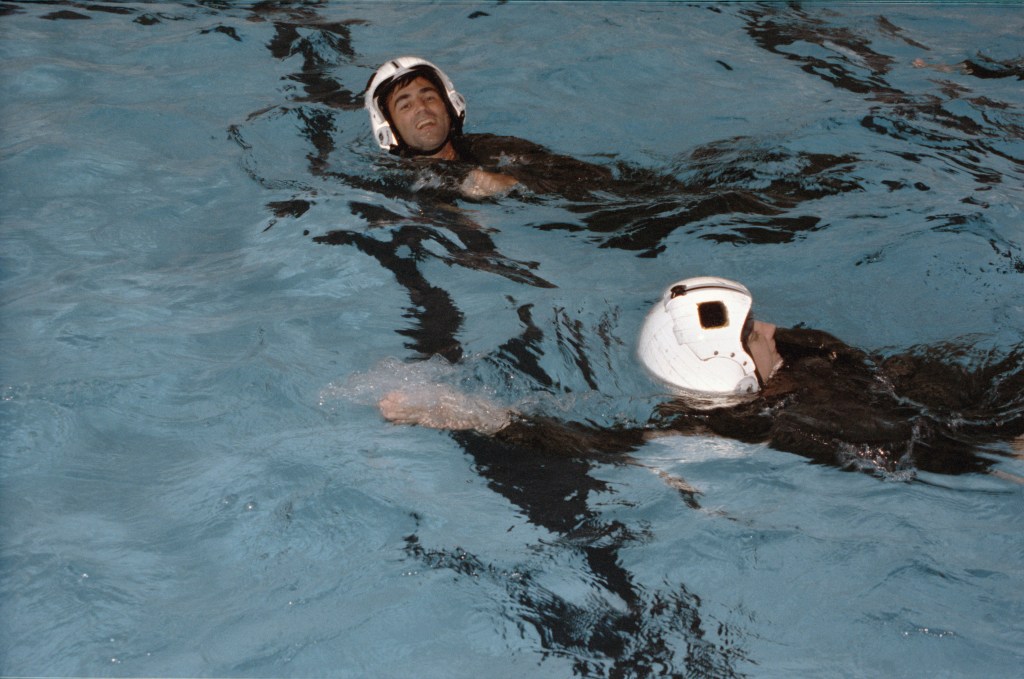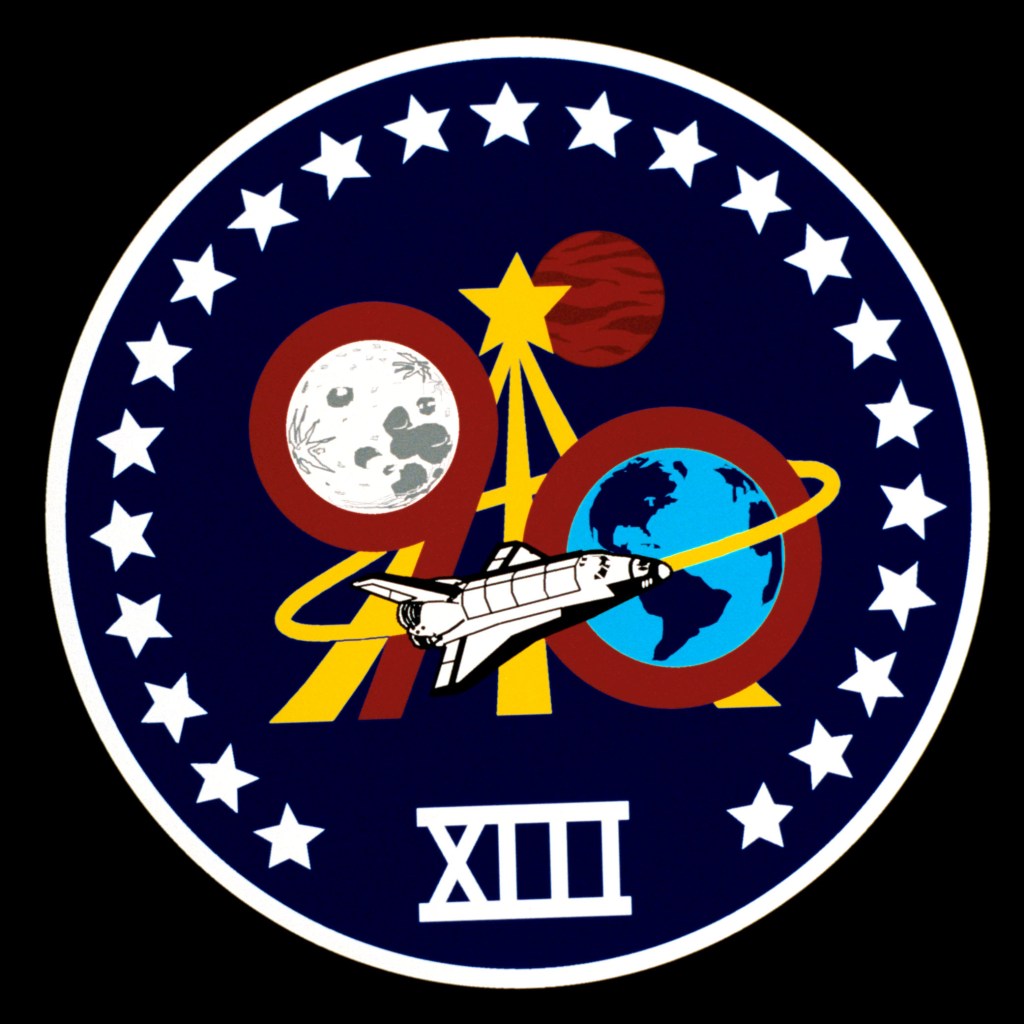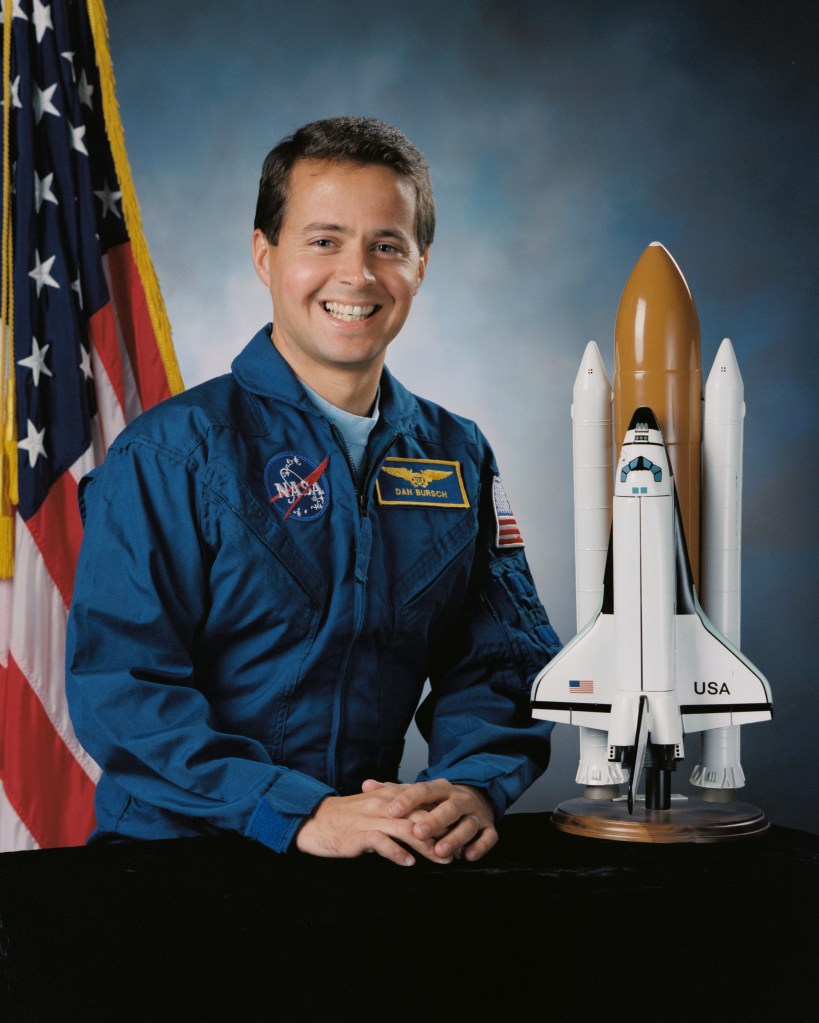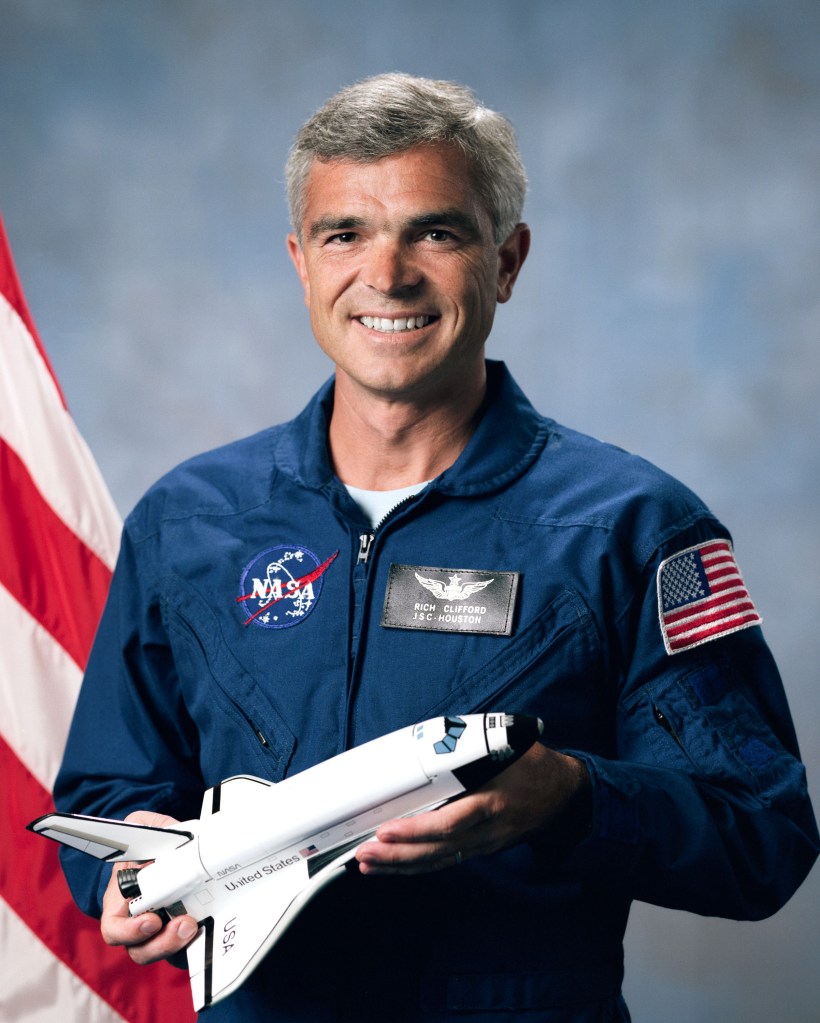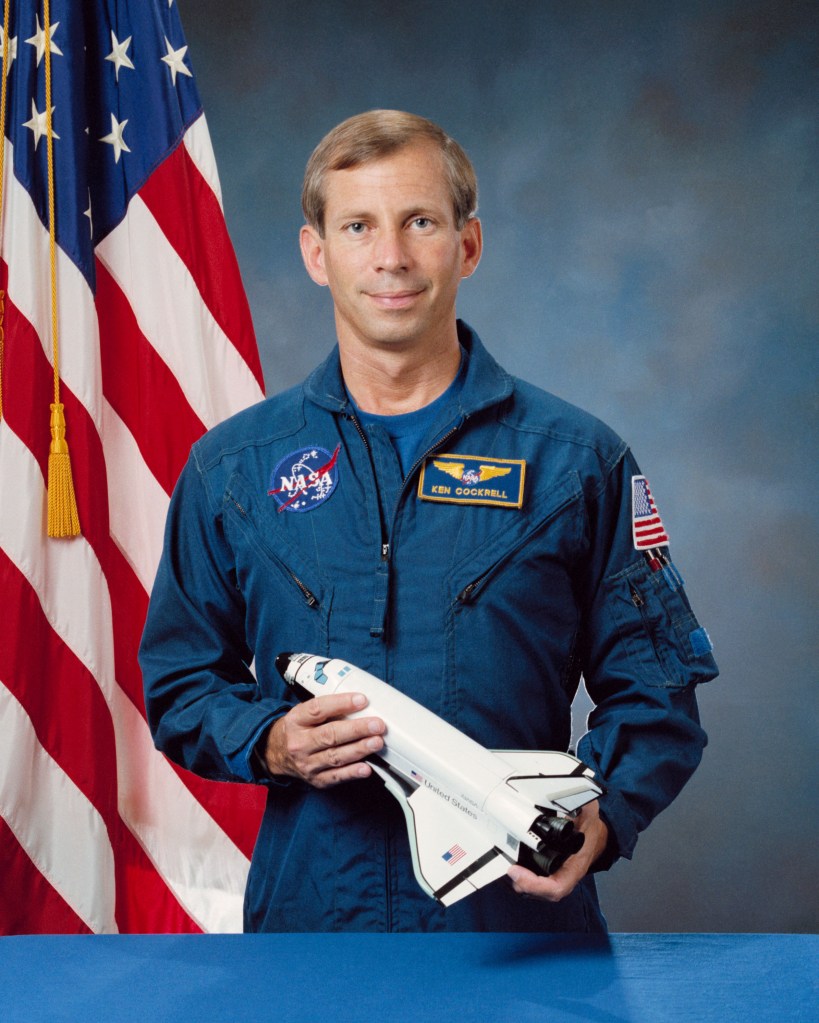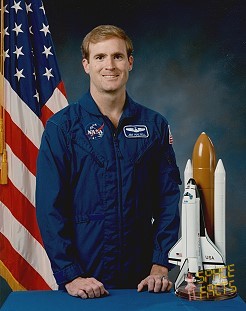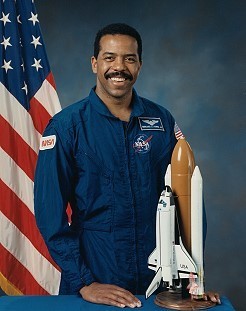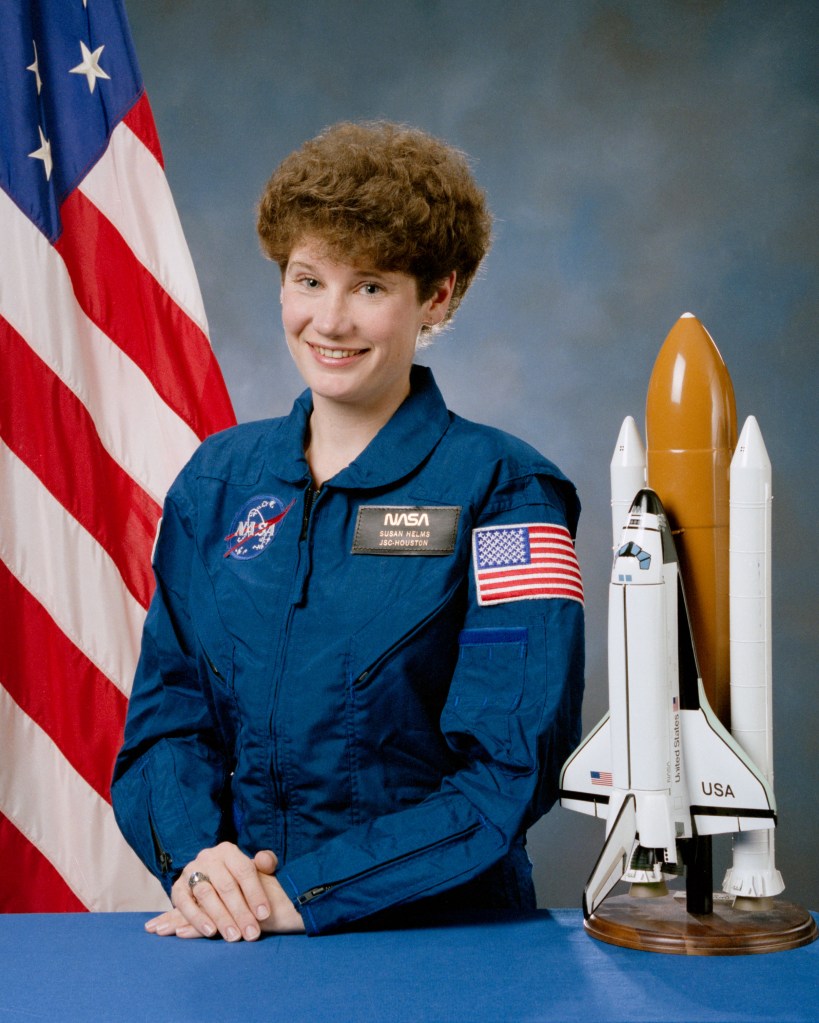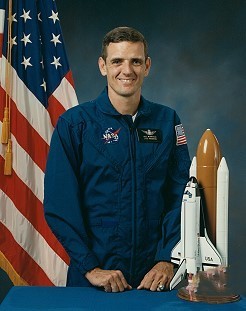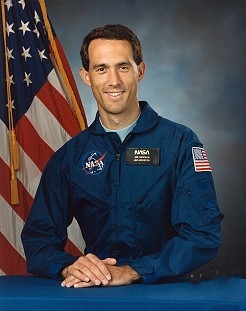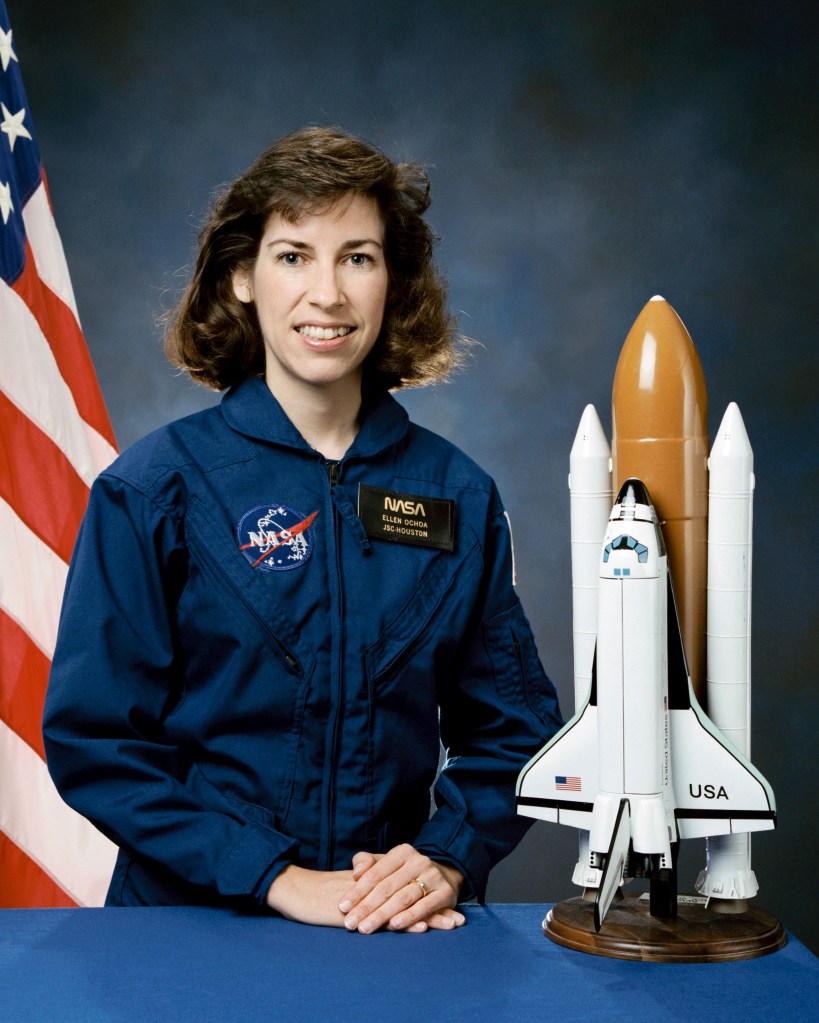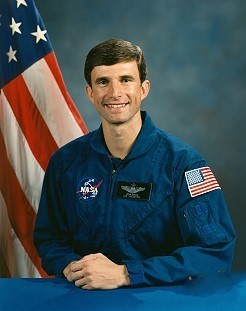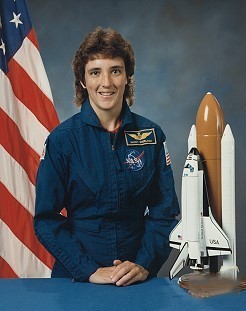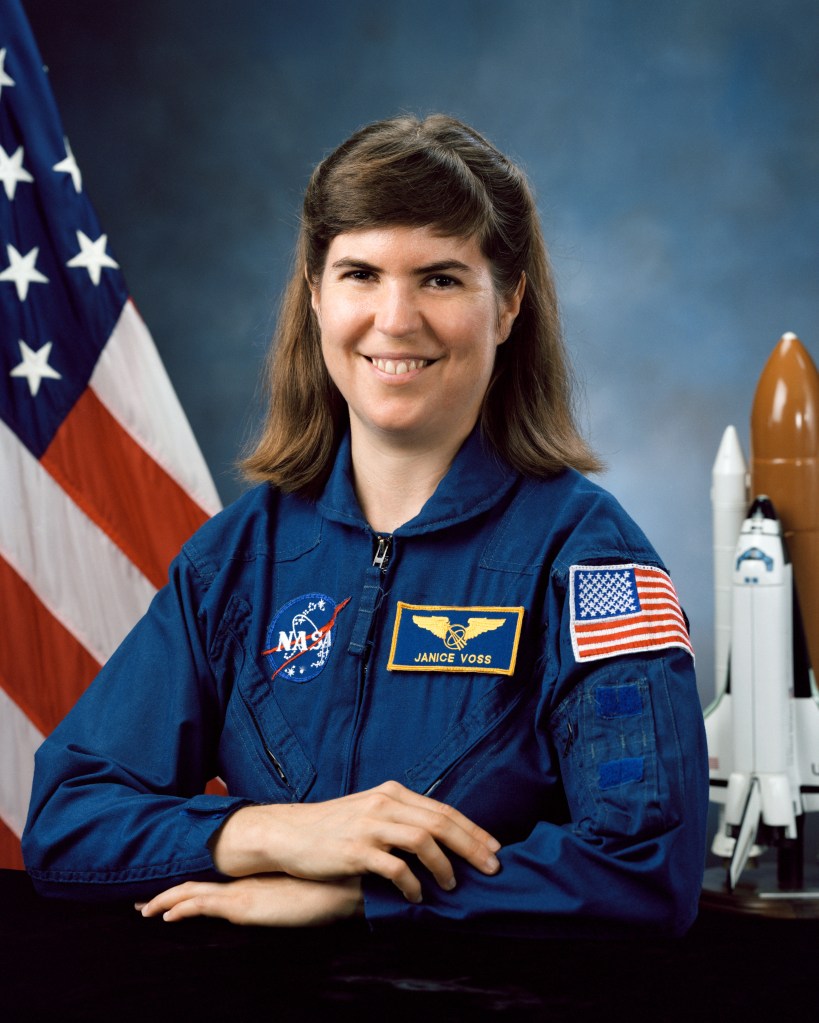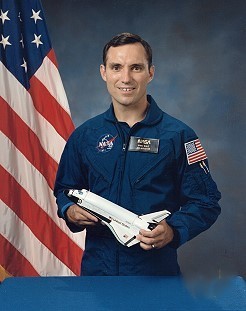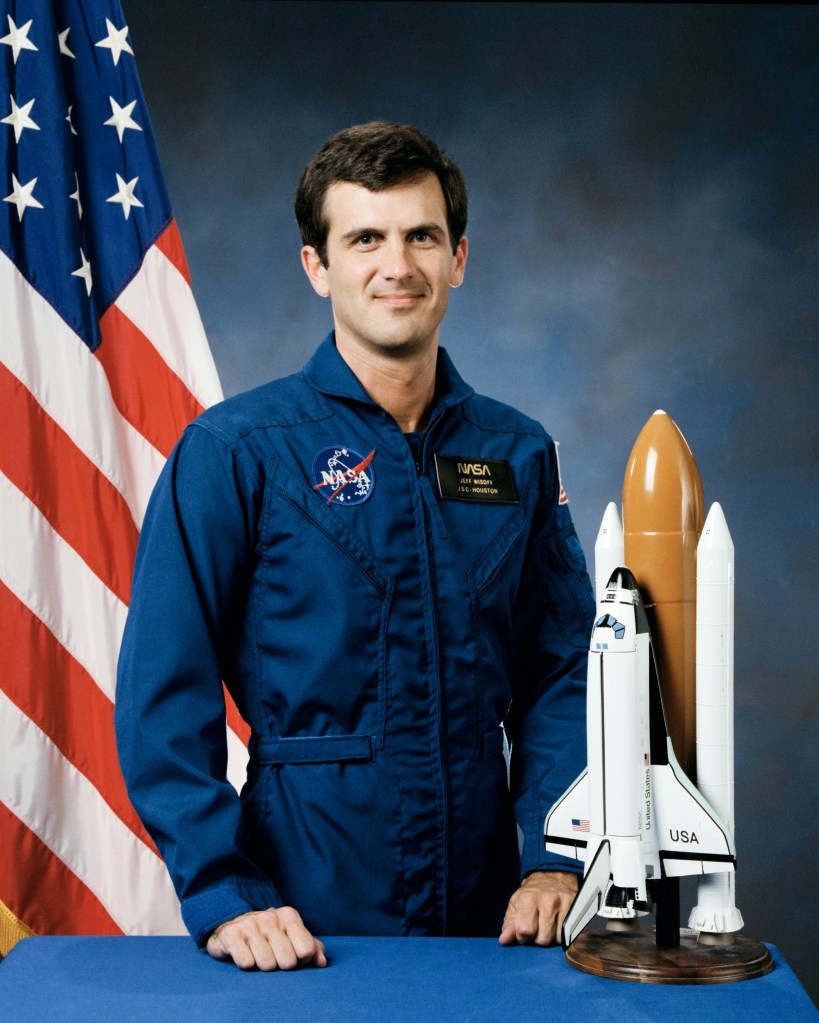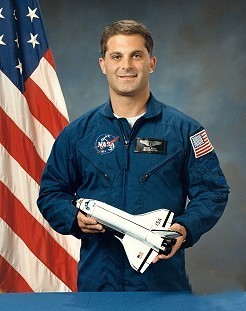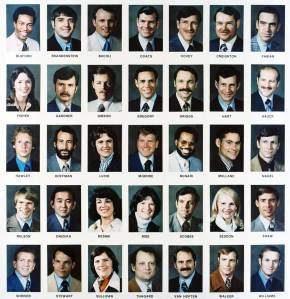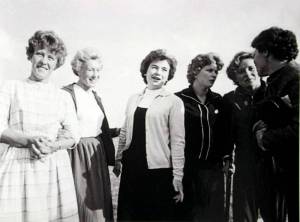35 Years Ago: NASA Selects its 13th Group of Astronauts
On Jan. 17, 1990, NASA announced the selection of its 13th group of astronaut candidates. The diverse group comprised 23 candidates – seven pilots and 16 mission specialists. The group included one African American, one Asian American, and five women including the first female pilot and the first Hispanic woman. Following one year of astronaut […]

On Jan. 17, 1990, NASA announced the selection of its 13th group of astronaut candidates. The diverse group comprised 23 candidates – seven pilots and 16 mission specialists. The group included one African American, one Asian American, and five women including the first female pilot and the first Hispanic woman. Following one year of astronaut candidate training, all 23 became eligible for technical assignments within the astronaut office and for assignment to space shuttle crews. All members of the group completed at least one spaceflight, making significant contributions to the space shuttle program, the Shuttle Mir program, important science missions, and assembly and maintenance of the International Space Station. Several went on to serve in key NASA management positions.
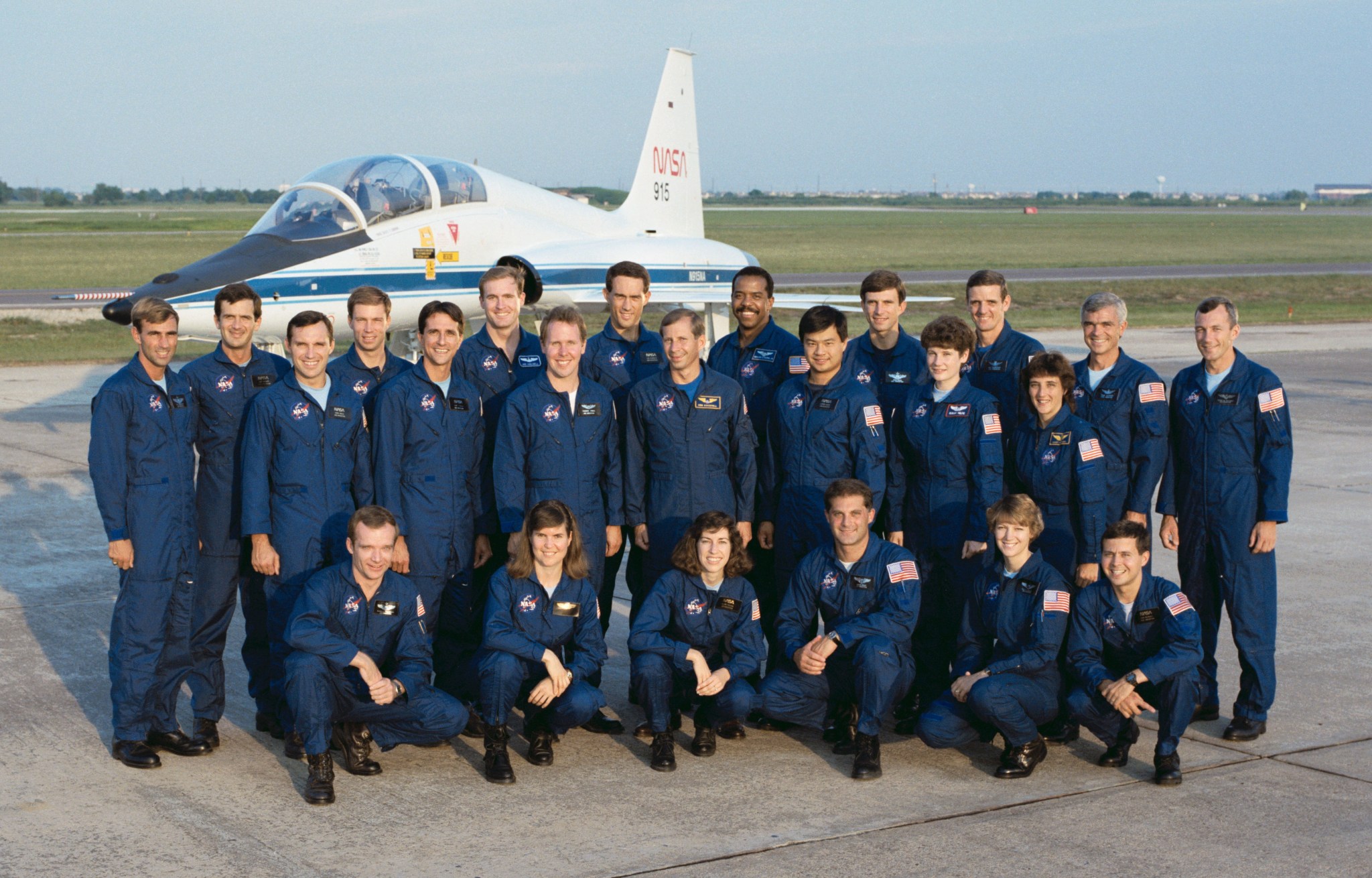
The newest class of NASA astronaut candidates included pilot candidates Kenneth Cockrell, Eileen Collins, William Gregory, James Halsell, Charles Precourt, Richard Searfoss, and Terrence Wilcutt and mission specialist candidates Daniel Bursch, Leroy Chiao, Rich Clifford, Bernard Harris, Susan Helms, Thomas Jones, William Mc Arthur, James Newman, Ellen Ochoa, Ronald Sega, Nancy Sherlock, Donald Thomas, Janice Voss, Carl Walz, Jeffrey Wisoff, and David Wolf. From the 1,945 qualified applicants, NASA invited 103 candidates for interviews and medical exams at NASA’s Johnson Space Center (JSC) in Houston between September and November 1989.
The 23 astronaut candidates reported to work at JSC on July 16, 1990, to begin their one-year training period. During the yearlong training, the candidates attended classes in applied sciences, space shuttle systems, space medicine, Earth and planetary sciences, and materials sciences. They visited each of the NASA centers to learn about their functions and received instruction in flying the T-38 Talon training aircraft, high-altitude and ground egress systems, survival skills, parasail flight, and scuba. They experienced short-duration weightlessness aboard NASA’s KC-135 aircraft dubbed the Vomit Comet. After completing the astronaut candidate training, they qualified for various technical assignments within the astronaut office leading to assignments to space shuttle crews.
Per tradition, most astronaut classes have a nickname, often humorously given to them by the previous class of astronauts. In the case of the class of 1990, they chose their own nickname, The Hairballs. The origin stems from the class adopting a black cat as their mascot, in recognition of their class number 13. The nickname came about as hairballs are often associated with cats.
Daniel Bursch
Born in Pennsylvania, Bursch grew up in New York state and graduated from the U.S. Naval Academy. He served as a pilot in the U.S. Navy prior to his selection as an astronaut. He received his first flight assignment as a mission specialist on STS-51, flying with fellow Hairballs Newman and Walz on the 10-day flight aboard Discovery in 1993. On his second mission, the 10-day STS-68 flight aboard Endeavour in 1994, Bursch, accompanied by fellow classmates Jones, Wilcutt, and Wisoff, served as a mission specialist on the Space Radar Laboratory-2 (SRL-2) Earth observation mission. For his third trip into space, Bursch flew as a mission specialist aboard Endeavour for the 10-day STS-77 mission in 1996. For his fourth and final spaceflight, Bursch, along with fellow Hairball Walz, spent 196 days in space as an Expedition 4 flight engineer aboard the space station in 2001 and 2002, conducting two spacewalks totaling 11 hours 46 minutes. He launched on STS-108 and returned on STS-111. Across his four missions, Bursch accumulated 227 days in space.
Leroy Chiao
California native Chiao earned a doctorate in chemical engineering from the University of California, Santa Barbara, before NASA selected him as an astronaut. For his first flight, he flew as a mission specialist on STS-65, the International Microgravity Lab-2 (IML-2) mission aboard Columbia in 1994. Fellow Hairballs Halsell, Walz, and Thomas accompanied Chiao on the nearly 15-day flight, the longest shuttle mission up to that time. During his second spaceflight, the nine-day STS-72 flight of Endeavour in 1996, Chiao participated in two spacewalks totaling 13 hours 3 minutes to demonstrate future techniques. In 2000, Chiao, accompanied by fellow classmates McArthur and Wisoff, flew the 13-day STS-92 3A space station assembly mission aboard Discovery. He participated in two spacewalks with classmate McArthur totaling 13 hours 16 minutes. For his fourth and final mission, Chiao served as commander of Expedition 10 in 2004 and 2005, spending 193 days in space. During the mission, he conducted two spacewalks totaling 9 hours 58 minutes. During his four flights, Chiao logged 229 days in space and spent more than 36 hours outside on his six spacewalks.
Rich Clifford
Clifford, born in California, grew up in Ogden, Utah. He holds the distinction as one of the first three astronauts of his class assigned to a spaceflight, the seven-day STS-53 mission aboard Discovery in 1992 to deploy a large satellite for the Department of Defense. His second flight, the SRL-1 mission aboard Endeavour took place in 1994. Fellow Hairball Jones accompanied him on the STS-59 11-day Earth observation mission. For his third and final spaceflight, Clifford flew as a mission specialist on the STS-76 third Shuttle Mir docking mission. During the nine-day mission in 1996, accompanied by fellow classmate Sega, Clifford participated in a six-hour one-minute spacewalk. During his three spaceflights, he accumulated nearly 28 days in space.
Kenneth Cockrell
Cockrell, a native Texan, served as naval aviator prior to his selection as an astronaut. On his first mission, STS-56, he served as a mission specialist for the nine-day ATLAS-2 Earth observation mission in 1993. Fellow classmate Ochoa accompanied him on the flight aboard Discovery. Cockrell served as pilot on his second mission, the 11-day STS-69 Endeavour flight in 1995 to deploy and retrieve the Wake Shield Facility. Classmate Voss accompanied him on this mission. Cockrell commanded his third spaceflight, STS-80 in 1996 aboard Columbia, accompanied by fellow Hairball Jones. At 17 days 15 hours 53 minutes days, it holds the distinction as the longest shuttle flight. He once again served as commander on his fourth mission, the STS-98 5A space station assembly flight in 2001. Accompanied by classmate Jones, the crew delivered the U.S. Laboratory Module Destiny during the 13-day mission. On his fifth and final spaceflight, Cockrell commanded the STS-111 space station UF-2 utilization mission in 2002. During the 14-day flight, the crew brought the Expedition 5 crew to the station and returned the Expedition 4 crew, including Hairballs Bursch and Walz. During his five missions, Cockrell accumulated 64.5 days in space. He served as Chief of the Astronaut Office from October 1997 to October 1998.
Eileen Collins
Hailing from New York state, Collins has the distinction as the first female selected by NASA as a shuttle pilot. She received her first flight assignment as pilot of STS-63, the eight-day Shuttle-Mir rendezvous mission in 1995. Fellow classmates Harris and Voss accompanied her aboard Discovery. Collins once again served as pilot on STS-84, the sixth Shuttle-Mir docking mission commanded by fellow Hairball Precourt. The nine-day flight aboard Atlantis took place in 1997. On her third flight, Collins served as the first female commander of a space mission, the five-day STS-93 flight of Columbia in 1999 to deploy the Chandra X-ray Observatory. She commanded her fourth and final mission, the STS-114 return to flight mission following the Columbia accident. The 14-day flight aboard Discovery took place in 2005. During her four missions, Collins logged 36 days in space.
William Gregory
New York native Gregory served as a U.S. Air Force pilot when NASA selected him as an astronaut. He flew his single mission as pilot of STS-67, the 17-day Astro-2 mission aboard Endeavour in 1995. The mission set a record for the longest shuttle flight up to that time.
James Halsell
Halsell, a native of Louisiana, served as a U.S. Air Force pilot when NASA selected him as an astronaut. On his first spaceflight, he served as pilot on STS-65, the IML-2 mission aboard Columbia in 1994. Fellow Hairballs Chiao, Walz, and Thomas accompanied Halsell on the nearly 15-day flight, the longest shuttle mission up to that time. Halsell once again served as pilot on his second flight, STS-74, the second Shuttle-Mir docking mission that delivered the Docking Module to Mir. Classmate McArthur joined Halsell on the eight-day Atlantis flight in 1995. He commanded his third spaceflight, STS-83 aboard Columbia, the Microgravity Sciences Lab in 1997. Because managers cut the flight short after four days due to a fuel cell failure, NASA decided to refly the mission, with the same crew, later in the year as STS-94, and it stayed in space for nearly 16 days. Classmates Voss and Thomas accompanied Halsell on both missions. Halsell also commanded his fifth and final spaceflight, the STS-101 2A.2a space station logistics mission in 2000. Classmate Helms accompanied Halsell on the 10-day mission aboard Atlantis. During his five missions, Halsell accumulated more than 52 days of spaceflight time.
Bernard Harris
Texas native Harris served as a NASA flight surgeon when the agency selected him as an astronaut. He holds the distinction as one of the first three astronauts of his class assigned to a spaceflight. He served as a mission specialist on the STS-55 joint U.S.-German Spacelab D2 mission in 1993. Fellow Hairball Precourt accompanied him on the 10-day flight aboard Columbia. Harris flew as payload commander on his second and final spaceflight, the STS-63 Mir rendezvous mission in 1995, accompanied by classmates Collins and Voss. During the flight, Harris conducted a 4-hour 49-minute spacewalk, earning the distinction as the first African American to do so. Across his two missions, Harris logged 18 days in space.
Susan Helms
Helms, a native of Portland, Oregon, graduated from the U.S. Air Force Academy in the first class that included women. Shortly after her selection as an astronaut, NASA assigned her to her first spaceflight, and she holds the distinction as one of the first three astronauts of her class assigned to a mission. She flew as a mission specialist on STS-54, a six-day flight aboard Endeavour in 1993 that deployed the sixth Tracking and Data Relay Satellite. On her second mission, Helms flew aboard STS-64, an 11-day flight aboard Discovery in 1994. She served as the payload commander on STS-78, the Life and Microgravity Sciences Spacelab mission aboard Columbia in 1996. The flight set a then-record of 16 days 22 hours for the longest space shuttle mission. On her fourth mission, she served as a mission specialist on STS-101, the 2A.2a space station logistics mission in 2000 commanded by classmate Halsell. The Atlantis mission lasted 10 days. For her fifth and final spaceflight, she served as a flight engineer during Expedition 2, the first woman to fly a long-duration mission on the International Space Station. She conducted one spacewalk lasting 8 hours 56 minutes, a record not broken until 2024. During her five spaceflights she logged 211 days in space.
Thomas Jones
Jones, a native of Baltimore, graduated from the U.S. Air Force Academy and served as a B-52 pilot when NASA selected him as an astronaut. For his first spaceflight, he served as a mission specialist on STS-59, the 11-day SRL-1 Earth observation mission on Endeavour in 1994, along with classmate Clifford. Later that same year, with just 163 days between the two missions – the second shortest turnaround time in history – Jones served as payload commander on STS-68, the 11-day SRL-2 mission also on Endeavour. Fellow Hairballs Wilcutt, Wisoff, and Bursch accompanied him on the mission. In 1996, Jones flew as a mission specialist on STS-80, commanded by classmate Cockrell. During the nearly 18-day flight – the longest shuttle flight in history – Jones had planned to participate in two spacewalks, but a stuck bolt prevented the opening of Columbia’s airlock hatch, forcing the cancelation of the excursions. Jones flew his fourth and final mission in 2001, the STS-98 5A space station assembly flight, commanded by classmate Cockrell. During the 13-day mission of Atlantis, the crew installed the U.S. Laboratory Module Destiny and Jones participated in three spacewalks totaling nearly 20 hours. During his four spaceflights, Jones logged 53 days in space.
William McArthur
Hailing from North Carolina, West Point graduate McArthur worked as a space shuttle vehicle integration test engineer at JSC when NASA selected him as an astronaut. He received his first spaceflight assignment as a mission specialist on the STS-58 Spacelab Life Sciences-2 (SLS-2) mission in 1993. Classmates Searfoss and Wolf accompanied him on the 14-day Columbia mission, at the time the longest space shuttle flight. In 1995, he flew as a mission specialist on STS-74, the second Shuttle Mir docking mission that brought the Docking Module to Mir. Classmate Halsell served as pilot on the eight-day flight of Atlantis. McArthur next flew on STS-92, the 3A space station assembly mission in 2000, accompanied by classmates Chiao and Wisoff. McArthur completed two spacewalks with Chiao totaling 13 hours 16 minutes during the 13-day Atlantis mission. For his fourth and final spaceflight, McArthur served as commander of the 190-day Expedition 12 in 2005-2006, conducting two spacewalks totaling 11 hours 5 minutes. During his four missions, McArthur logged 225 days in space and spent more than 24 hours on four spacewalks. He served as the director of the JSC Safety and Mission Assurance Directorate from 2011 to 2017.
James Newman
Born in Micronesia, Newman grew up in San Diego and earned a doctorate in physics from Rice University. He worked at JSC as a crew and flight controller trainer when NASA selected him as an astronaut. For his first spaceflight assignment, Newman flew as a mission specialist on STS-51 in 1993 with fellow Hairballs Bursch and Walz. During the 10-day mission aboard Discovery, Newman conducted a 7-hour 5-minute spacewalk with Walz to demonstrate future spacewalking techniques. His second flight took place in 1995, the 11-day STS-69 mission of Endeavour, with classmate Halsell serving as pilot. On his third mission, Newman flew as a mission specialist on STS-88, the first space station assembly flight in 1998. Classmate Sherlock, now using her married name Currie, accompanied him on the 12-day Atlantis mission. Newman participated in three spacewalks totaling 21 hours 22 minutes. For his fourth and final spaceflight in 2002, Newman flew on STS-109, the fourth servicing mission to the Hubble Space Telescope, accompanied once again by classmate Currie. During the 11-day Columbia mission, Newman conducted two spacewalks totaling 14 hours 46 minutes. During his career four spaceflights, Newman logged more than 43 days in space and spent nearly 50 hours on six spacewalks.
Ellen Ochoa
Born in Los Angeles, Ochoa received her doctorate in electrical engineering from Stanford University and worked at NASA’s Ames Research Center in California’s Silicon Valley when NASA selected her as an astronaut. Her first flight assignment came in 1993 when she flew as a mission specialist on STS-56, the nine-day ATLAS-2 Earth observation mission. Classmate Cockrell accompanied her on the Discovery mission. On her second spaceflight, she served as payload commander on the STS-66 ATLAS-3 mission, an 11-day flight of Atlantis in 1994. For her third flight, she flew on Discovery’s STS-96, the 10-day 2A.1 space station assembly and logistics mission in 1999. In 2002, on her fourth and final mission, STS-110, she served as a mission specialist on the 8A space station assembly flight that brought the S0 truss to the facility. The flight on Atlantis lasted nearly 11 days. Over her four missions, Ochoa accumulated nearly 41 days in space. Following her spaceflights, Ochoa served in management positions with increasing scope and responsibilities, as director of the Flight Crew Operations Directorate, JSC deputy director, and JSC director.
Charles Precourt
Massachusetts native Precourt graduated from the U.S. Air Force Academy and served as a U.S. Air Force pilot when NASA selected him as an astronaut. On his first spaceflight in 1993, he served as a mission specialist on STS-55, the joint U.S.-German Spacelab D2 mission. Fellow Hairball Harris accompanied him on the 10-day Columbia mission. On his next spaceflight, Precourt served as pilot on STS-71, the first Shuttle-Mir docking mission in 1995. The 10-day Atlantis mission included the first shuttle-based crew rotation. Precourt commanded his third spaceflight, STS-84 in 1987, the sixth Shuttle-Mir docking mission. Classmate Collins served as pilot on the nine-day Atlantis mission. He commanded his fourth and final space mission, STS-91, the ninth and final Shuttle-Mir docking flight, earning him the honor as the only American astronaut to visit Mir three times. The 10-day mission aboard Discovery took place in 1998. Across his four spaceflights, Precourt logged nearly 39 days in space. He served as chief of the Astronaut Office from October 1998 to November 2002.
Richard Searfoss
Born in Michigan, Searfoss graduated from the U.S. Air Force Academy and served as an instructor at the U.S. Air Force Test Pilot School when NASA selected him as an astronaut. On his first spaceflight, Searfoss served as pilot on STS-58, the SLS-2 mission in 1993. Classmates McArthur and Wolf joined him on the flight aboard Columbia, at 14 days then the longest space shuttle mission. In 1996, he once again served as pilot on STS-76, the third Shuttle-Mir docking mission. Classmates Clifford and Sega joined him on the nine-day flight aboard Atlantis. Searfoss commanded his third and final spaceflight, the 16-day STS-90 Neurolab mission aboard Columbia in 1998. Across his three missions, Searfoss logged 39 days in space.
Ronald Sega
Ohio native Sega graduated from the U.S. Air Force Academy and worked as a research associate professor of physics at the University of Houston when NASA selected him as an astronaut. On his first spaceflight, he served as a mission specialist aboard STS-60, the first Shuttle-Mir mission. The eight-day mission aboard Discovery took place in 1994. For his second and final spaceflight in 1996, Sega served as a mission specialist on STS-76, the third Shuttle-Mir docking mission. Fellow Hairballs Searfoss and Clifford also flew on the nine-day Atlantis mission. Across his two spaceflights, Sega logged 17.5 days in space.
Nancy Sherlock Currie
Born in Delaware, Sherlock grew up in Ohio and worked as a flight simulation engineer at JSC when NASA selected her as an astronaut. On her debut spaceflight, Sherlock flew as a mission specialist on STS-57, the first flight of the Spacehab module in 1993. Fellow classmates Voss and Wisoff joined her on the 10-day mission aboard Endeavour. On her subsequent missions, she flew under her married name of Currie. Her second trip into space took place in 1995, the nine-day STS-70 mission aboard Discovery. Classmate Thomas joined her on this mission to deploy the seventh TDRS satellite. On her third mission, Currie flew as a mission specialist on STS-88, the first space station assembly mission in 1998. Classmate Newman accompanied her on the 12-day Atlantis mission. For her fourth and final spaceflight in 2002, Currie flew on STS-109, the fourth Hubble Space Telescope servicing mission. Classmate Newman once again accompanied her on the 11-day Columbia mission. Across her four spaceflights, Currie logged nearly 42 days in space.
Donald Thomas
Ohio native Thomas earned a doctorate in materials science from Cornell University and worked as a materials science engineer at JSC when NASA selected him as an astronaut. For his first flight, he flew as a mission specialist on STS-65, the IML-2 mission aboard Columbia in 1994. Fellow Hairballs Halsell, Chiao, and Walz accompanied Thomas on the nearly 15-day flight, the longest shuttle mission up to that time. His second trip into space took place in 1995, the nine-day STS-70 mission aboard Discovery. Classmate Currie joined him on this mission to deploy the seventh TDRS satellite. Thomas flew his third spaceflight on STS-83 aboard Columbia, the MSL mission in 1997. Because managers cut the flight short after four days due to a fuel cell failure, NASA decided to fly the mission again, with the same crew, later in the year as STS-94, for the full 16-day mission duration. Classmates Halsell and Voss accompanied Thomas on both missions. Across his four missions, Thomas logged 43 days in space.
Janice Voss
Ohio native Voss earned a doctorate in aeronautics and astronautics from the Massachusetts Institute of Technology and worked as an integration manager at Orbital Science Corporation in Houston when NASA selected her as an astronaut. On her first spaceflight, Voss flew as a mission specialist on STS-57, the first flight of the Spacehab module in 1993. Fellow classmates Sherlock and Wisoff joined her on the 10-day mission aboard Endeavour. Voss flew as a mission specialist on her second spaceflight, the STS-63 Mir rendezvous mission in 1995, accompanied by classmates Collins and Harris. Voss flew as payload commander on her third spaceflight on STS-83 aboard Columbia, the MSL mission in 1997. Because managers cut the flight short after four days due to a fuel cell failure, NASA decided to refly the mission, with the same crew, later in the year as STS-94, for the full 16-day mission duration. Classmates Halsell and Thomas accompanied Voss on both missions. On her fifth and final spaceflight, Voss once again served as payload commander on STS-99, the Shuttle Radar Topography Mission. The 11-day mission aboard Endeavour took place in 2000. Over her five missions, Voss accumulated 49 days of spaceflight time.
Carl Walz
A native of Ohio, Walz worked as a flight test manager at the U.S. Air Force Flight Test Center in Nevada when NASA selected him as an astronaut. He received his first flight assignment as a mission specialist on STS-51, flying with fellow Hairballs Bursch and Newman on the 10-day flight aboard Discovery in 1993. Walz conducted a 7-hour 5-minute spacewalk with Newman to demonstrate future spacewalking techniques. For his second flight, he flew as a mission specialist on STS-65, the IML-2 mission aboard Columbia in 1994. Fellow Hairballs Halsell, Chiao, and Thomas accompanied Walz on the nearly 15-day flight, the longest shuttle mission up to that time. On his third trip into space, he served as a mission specialist on STS-79, the fourth Shuttle-Mir docking mission in 1996. Classmate Wilcutt served as pilot on the 10-day Atlantis mission. For his fourth and final spaceflight, Walz, along with fellow Hairball Bursch, spent 196 days in space as an Expedition 4 flight engineer aboard the space station in 2001 and 2002, conducting two spacewalks totaling 11 hours 50 minutes. He launched on STS-108 and returned on STS-111. Across his four missions, Walz logged more than 230 days in space and spent nearly 19 hours on three spacewalks.
Terrance Wilcutt
A native of Kentucky, Wilcutt served in the U.S. Marine Corps and worked as a test pilot at Naval Air Station Patuxent River when NASA selected him as an astronaut. Wilcutt served as pilot on his first spaceflight, STS-68, the 10-day SRL-2 Earth observation mission aboard Endeavour in 1994. Classmates Bursch, Jones, and Wisoff accompanied Wilcutt on the flight. He served as pilot on his second spaceflight, the STS-79 fourth Shuttle-Mir docking mission in 1996. Fellow Hairball Walz accompanied him on the 10-day Atlantis mission. Wilcutt commanded his third mission, STS-89, the eighth Shuttle-Mir docking mission. The nine-day flight aboard Endeavour took place in 1998. He commanded his fourth and final spaceflight in 2000, the STS-106 2A.2b space station assembly and logistics mission. The 12-day mission flew on Atlantis. Across his four missions, Wilcutt logged 42 days in space. He served as the NASA chief of Safety and Mission Assurance from 2011 to 2020.
Jeff Wisoff
Virginia native Wisoff earned a doctorate in applied physics from Stanford University and worked as an assistant professor at Rice University when NASA selected him as an astronaut. On his first spaceflight, Wisoff flew as a mission specialist on STS-57, the first flight of the Spacehab module in 1993. Fellow classmates Sherlock and Voss joined him on the 10-day mission aboard Endeavour. He participated in a 5-hour 50-minute spacewalk to demonstrate future spacewalking techniques. Wisoff served as a mission specialist on his second spaceflight, STS-68, the 10-day SRL-2 Earth observation mission aboard Endeavour in 1994. Classmates Bursch, Jones, and Wilcutt accompanied him on the flight. He served as a mission specialist on his third flight, STS-81, the fifth Shuttle-Mir docking mission in 1997. The 10-day flight took place aboard Atlantis. He flew his fourth and final mission on STS-92, the 3A space station assembly mission in 2000 that brought the Z1 truss to the facility. Wisoff participated in two spacewalks totaling 14 hours 3 minutes during the 13-day Discovery mission. Across his four spaceflights, Wisoff logged 44 days in space and spent nearly 20 hours on three spacewalks.
David Wolf
A native of Indiana, Wolf earned a medical degree from Indiana University and worked as an aerospace medical officer at JSC when NASA selected him as an astronaut. He received his first spaceflight assignment as a mission specialist on the STS-58 SLS-2 mission in 1993. Classmates Searfoss and McArthur accompanied him on the 14-day Columbia mission, at the time the longest space shuttle flight. For his second trip into space, he completed the 128-day NASA-6 long-duration mission as part of the Shuttle-Mir program in 1997 and 1998, launching aboard STS-86 and returning aboard STS-89. He participated in a 3-hour 52-minute spacewalk. He flew his third spaceflight as a mission specialist on the STS-112 9A space station assembly mission in 2002 that delivered the S1 truss to the orbiting lab. During the 11-day Atlantis mission, Wolf participated in three spacewalks totaling 19 hours 41 minutes. He completed his fourth mission on STS-127 in 2009, earning him the distinction as the last Hairball to make a spaceflight. During the 16-day Endeavour mission that delivered the Japanese module’s exposed pallet to the space station, Wolf participated in three spacewalks totaling 18 hours 24 minutes. Across his four spaceflights, Wolf logged more than 168 days in space and spent 42 hours on seven spacewalks.
Summary
The NASA Group 13 astronauts made significant contributions to spaceflight. As a group, they completed 85 flights spending 1,960 days, or more than five years, in space, including one long-duration flight aboard Mir and five aboard the International Space Station. One Hairball made a single trip into space, three made two trips, one made three, 15 made four, and three went five times. Twenty-one members of the group contributed their talents on Spacelab or other research missions and three performed work with the great observatories Hubble and Chandra. Thirteen participated in the Shuttle Mir program, with 11 visiting the orbiting facility, one of them twice, another three times, and one completing a long-duration mission. Fifteen visited the International Space Station, five twice, participating in its assembly, research, maintenance, and logistics, with five completing long-duration missions aboard the facility. Eleven of the 23 performed 37 spacewalks spending 242 hours, or more than 10 days, outside their spacecraft.
What's Your Reaction?



















.jpg?#)
























